#imaginary climate zone maps
Text


Once I had enough high-resolution climate data to work with, the final part of the Climate phase was the creation of maps with discrete climate zones, which I produced in both the Trewartha classification scheme, left, and the Köppen classification scheme, right.



The final phase of the Ayrum mapmaking project was to create realistic satellite style maps, which began with mapping out soil colors and the ground cover of vegetation generally and tree-analogues specifically.

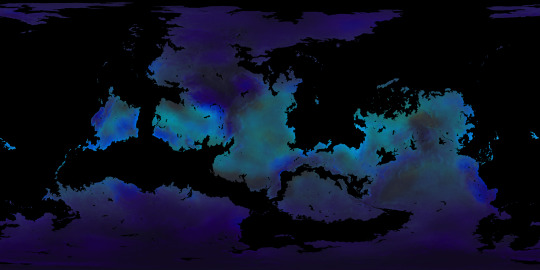
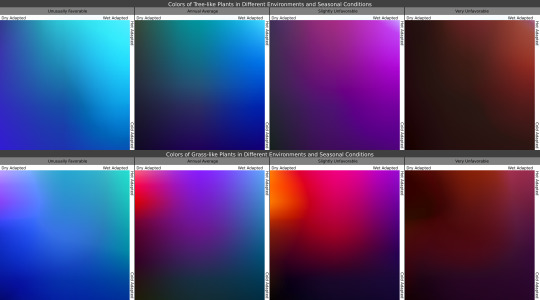
Once I knew where the plants belonged, I then determined what colors they'd be in the conditions they're adapted for, as seen in the maps, and under seasonal variation, with the chart showing how plants with certain adaptations react to seasonal changes in those conditions.

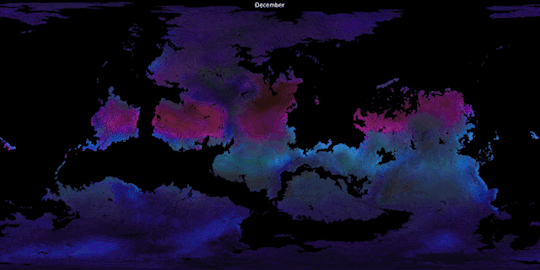
In these gifs we see the ground plants and tree canopies changing colors as the Solstices and Equinoxes expose them to greater or lesser rainfall and harsher or milder temperatures than what they're adapted for. Neither of these gifs provide a true image of what the surface looks like from space, but rather of the in-person appearance of whatever plants may be present.



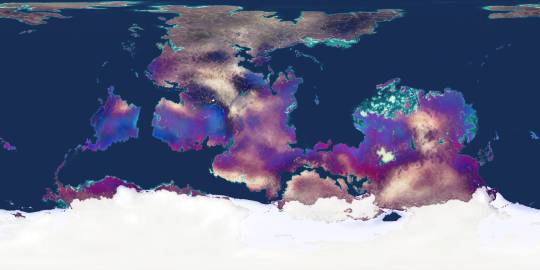
Finally, using the vegetation density maps as raster masks for the seasonal plant color maps, and layering those with the snow-and-ice maps over the soil color map, we now have a much truer image of Ayrum's surface as of its (Northern) Winter, Spring, Summer, and Autumn months.
#Ayrum#mapmaking#digital painting#imaginary maps#imaginary climate zone maps#Trewartha climate scheme#Koppen climage scheme#worldbuilding#commission#major project#seasonal data sequence#imaginary soil color maps#imaginary vegetation maps#vegetation extent#vegetation color#satellite-style maps#Photopea#Christopher Maida Artwork
49 notes
·
View notes
Note
Hi, your blog is great, a very good resource and useful. I was wondering if I could ask, have you ever read a book/article about the life cycle of product, I mean an examination of the resource extraction/labor/factory/transport process and how each stage is damaging to people/environment? I've been looking and nothing is useful. Sorry if my English is not great. Thank you for your blog!
Hello. Thank you for such a supportive and kind message. You are always welcome to send me messages. I know that I’m often annoying, so I’m happy if anything I’ve shared/posted has provided an interesting resource.
Thank you for trusting me enough to send me this message, but I don’t think I’m qualified to answer it too well. I think that some of my friends on this site would be better able to provide some recommendations for you. For example, I don’t know anything about the transportation stage of products, or how providers/corporations eventually come to move, say, edible produce from the agricultural source, across borders, and into a grocery store (though I’m mostly-sure that colonial/imperial/corporate powers have obscured these mechanisms of food production, in many/most cases purposely, in order to absolve metropolitan consumers of any potential realization of guilt or complicity in violence). But I don’t know anything about product life cycles generally. So I don’t think I’m a great person to ask, y’know? For example, in the case of, say, lithium production, I’ve not found or read any, like, comprehensive book or singular text that, like, follows the entire process from extraction, through refinement, to use, and then eventual disposal. But I’m sure there are books/articles/texts out there which do describe this process. And that’s why I’d invite someone else, one of my friends or whomstever, to offer recommendations, since I can’t.
------------
That said, I’ve got a couple of recommendations. I’m relatively more interested in plantations; the life cycle of some few very specific products (rubber; palm oil; uranium; lithium); more broad discussion of the damage wrought from industrial-scale resource extraction and development (Anthropocene and Plantationocene concepts; planetary urbanization); or the violence of the first/initial stages of the product life cycle (wastelanding; colonial/imperial institutions dispossessing people of land; poisoning/contamination from mining). So I’ve got some resources here related to these concepts.
------------
The concept of “planetary urbanization” or “planetary urban fabric” basically refers to how, at least in the past two or three centuries, there is no corner of the planet that has been spared ecological damage by or escaped the resource extraction cycles of industrial development and major urban areas. This is the idea that every corner of Earth, no matter how apparently “remote” or “wild”, is altered by and implicated in industrial resource extraction. (For example, even “remote” Siberia hosts pipelines and giant mines that service major urban areas. Ice-loss in Greenland and algae blooms in the open ocean are related to anthropogenic climate alteration. Isolated forests of the Great Bear Rainforerst are still penetrated by logging roads. Industrial cropland disrupts the soil of the West African Sahel, and then Saharan dust storms sweep into the Caribbean; etc.)
Some introductions to the concept: Roi Salgueiro Barrio. “What World? Reframing the World as One City.” December 2016. ////////// Lindsay Bremner. “The Urban Hyperobject.” Geoarchitecture. 24 August 2015. ////////// Maria Kaika and Erik Swyngedouw. “Radical urban political-ecological imaginaries.” Derive. May 2014. ////////// And here’s a compilation post I put together, with short excerpts from several articles about planetary urbanization.
------------
Anyway, seems like this might be more closely related to what you’re looking for. These are some recent things I’ve read that seem related to the violence of the product life cycle.
-- I wrote a post about the violence of the life cycle of uranium (including initial extraction and mining; refinement; and disposal, imposing violence at every stage of production) in Navajo Country and the Colorado Plateau (includes maps of uranium mines; radioactive fallout zones; and radioactive waste disposal sites).
-- Andrea Knutsen. “Scarcity and the Suburban Backyard.” Edge Effects. 1 September 2020. [This article is about food and grocery store supply chains in North America during crises and how British imperialism in the Caribbean in recent centuries relied on the imposition of artificial scarcity and the maintinence of a racialized economic hierarchy which still influences contemporary food supply chains.]
-- Gaston Gordillo. “The Metropolis: The Infrastructure of the Anthropocene.” In: Infrastructures, Environment, and Life in the Anthropocene. Edited by Kregg Hetherington. 2019. [This article is about the stages of dispossession, policy, and marketing that support massive soy agriculture/extraction in Latin America, and how soy is an example of how contemporary products involve dispossession at multiple scales in multiple regions driven by forces that transcend national boundaries. This article also describes planetary urbanization.]
-- Martin Arboleda. “Financialization, totality, and planetary urbanization in the Chilean Andes.” December 2015. [This article is about lithium in Latin America, how lithium extraction relates to the mass “financialization of life” in the neoliberal era, and how local dispossession in Chile is driven by investors and companies from North America.]
-- Yanis Iqbal. “The Ravages of Lithium Extraction in Chile.” 15 July 2020. [This article is about “lithium imperialism” and how so-called “sustainable” electric cars in European and North American markets rely on dispossession and ecological/human violence in Latin America.]
-- Gregg Mitman. “Forgotten Paths of Empire: Ecology, Disease, and Commerce in the Making of Liberia’s Plantation Economy.” Environmental History. December 2016. [Article about the early-20th-century extraction and production of rubber via corporate plantations in West Africa and how US medical institutions and Harvard doctors relied on plantations for access to research; also discusses coffee and fruit plantations in Latin America.]
-- Post I wrote about the difference between a forest and a tree plantation, focused on resource extraction on Mapuche land in the Valdivian temperate rainforest region of “Chile.”
-- Mongabay has done consistent work covering palm oil plantations which service European and North American food markets, especially focused on plantations in Indonesia, which appear to be dependent on Indigenous dispossession in Borneo and Papua. One example of the initial stages of violence: Sophie Chao. “In the plantations there is hunger and loneliness: The cultural dimensions of food insecurity in Papua.” Mongabay 14 July 2020.
-- On a related note, here’s a long and comprehensive look at palm oil: Human Rights Watch. “When We Lost the Forest, We Lost Everything”: Oil Palm Plantations and Rights Violations in Indonesia. September 2019.
-- Melanie K. Yazzie. “Decolonizing Development in Dine Bikeyah: Resource Extraction, Anti-Capitalism, and Relational Futures.” Environment and Society. September 2018. [This article is about the connections between Navajo Country and US border policies; connections between coal mining, uranium, and land dispossession; and ecological/human damage of wastelanding in the region.]
-- Post I wrote about fossil fuel refineries; environmental racism; high c0vid death rates; cancer rates; toxic air; state violence; and local zoning policy in Louisiana’s Cancer Alley (with a bunch of maps, photos, and graphics).
-- Inspired by a good article Mongabay did about the history of one particular major land-owning company, here’s a post I wrote about how a Gilded Age company founded by friends of King Leopold in the infamous rubber plantations of the Congo eventually came, today, to establish and own the major rubber plantations of Southeast Asia which service Euro-American markets, while the same company still maintains many “neo-colonial” land holdings in Africa.
-- Nicholas Jahr. “Workers Organize at Firestone, Liberia’s ‘State Within a State’.” The Nation. 8 July 2010. [Article about contemporary rubber plantations in West Africa and how Firestone -- “official tire of Major League Baseball” -- functions and rules as a de facto colonial/imperial state.]
-------
Let me know if anyone wants links to read these articles for free.
Thank you for reaching out. Thanks again for being so kind.
24 notes
·
View notes
Text
The Street
How does the street speak and what does it say?
I started looking at the street because I had been looking at schools and childhood and discovered a subsection of human geography; children’s geographies, the study of the spaces and places of children. From there I began looking at children’s street culture, in particular the act of play on the street. In looking at collection I began to think about collections of objects in public spaces, in particular somewhat ephemeral collections that go undocumented.
What is the value of the street? How can we capitalise on this value by transforming or celebrating our treatment of the street? How has this piece of infrastructure formed how we behave in an urban environment? This is a space where we meet each other, greet each other, pass each other indifferently or protest together. Arguably our most important urban spaces; where we encounter others the most.
The narrative of the street is not as straightforward as destruction over preservation - it’s really much more organic than that and informed by the people who walk the streets. Look at what the street has already done for us in order to explore what we can do for it?
Starting points;
The street as a subdivision of space - I have been looking at smaller spaces within larger spaces for several recent briefs ;I created a matchbox container park whilst mapping Rankin Inlet and interrogated cabinets during the Legs brief. The street is a cabinet of space within a city - containing the fundamentals of that particular street. I think it would be interesting to think of the street as a drawer containing objects specific to its “category” and collect typologies of streets - what constitutes a neighbourhood street, a high street, the street market, what do we expect to see on these streets and what do we not expect to see? Also what ultimately forms a street? Yes tarmac is poured to create space for cars but do rows of buildings or a path frequently walked but unmarked precede this? Is there in fact a system of organisation where we might not immediately identify one? Can you decide what is the highstreetiest high street (Mostest) by way of comparison plus interrogation of key features? Art as a means of containing large scale of thought and of the physical realm into a small space.

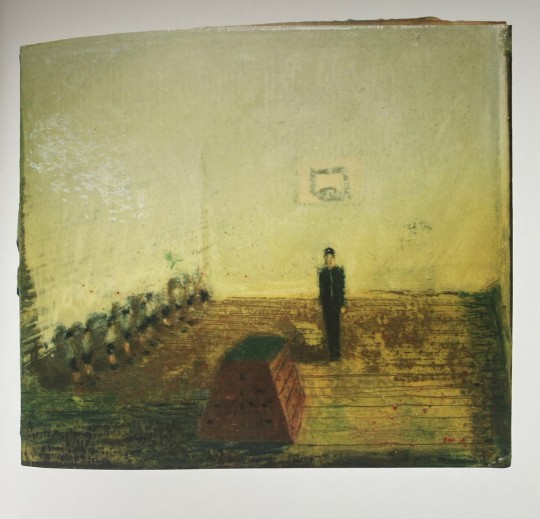
Physical Education - Andrew Cranston. Inner scale - how much can a small space contain if the objects within it have a lot of symbolic value? “small paintings can be describing large or even vast space.” Child’s distortion of scale.

Can a cabinet be a street in a city?

Matchbox museum - Rankin Inlet

Examples of street typologies/ street “furniture” typologies
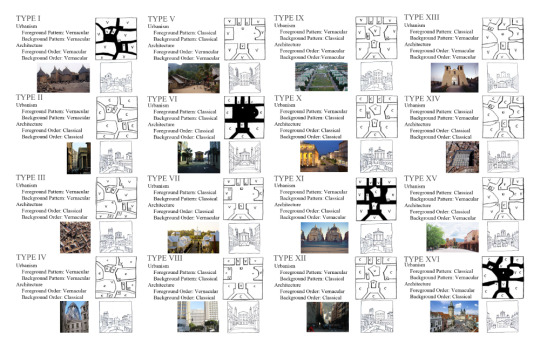
Street Furniture - interrogating objects specific to that typology of street. I found street furniture; what could be seen on the street and the treatment of these objects to be a key insight into the small community of Rankin Inlet. The necessity for above ground sewage pipes communicated adaptation to the harsh climate, the shipping containers evidenced their lack of subsistence and the abandoned mine structures tagged with “we got left behind” communicated their emotional relationship to being a post industrial society. (https://core.ac.uk/download/pdf/33556794.pdf paper on mining in Rankin Inlet references “memoryscapes” the industrial ruins provide resources for place identity and community memories: the role of memory in “articulating the relationship between community and landscape, or between landscape and an individual.”)

Children’s street culture - I am interested in looking at the games children play communally on the street (mostly pre - introduction of cars.) How does the street as a structure inform urban children’s play? I find this particularly fascinating because often games are merely words and movements and rules born of the mind and acted out momentarily. What of these has survived and why? How valuable are these games to the developing child? What are the remnants of play on the streets? What objects are borrowed from the environment, which ones are additions to the environment? Which ones can only be used in the urban environment? I.e a game of marbles can only be played on a hard surface.
Archives:
https://www.opiearchive.org/ (games/ street culture are largely documented in personal archives/ initiatives)

From the Opie collection:


Dan Jones:
https://spitalfieldslife.com/2020/09/21/chris-kelly-dan-jones-in-the-playground-x/
https://spitalfieldslife.com/2010/04/17/dan-jones-rhyme-collector/

Dan’s painting of Christ Church School, Brick Lane in 1982, as reproduced in “Inky, Pinky, Ponky”, a book of playground rhymes.
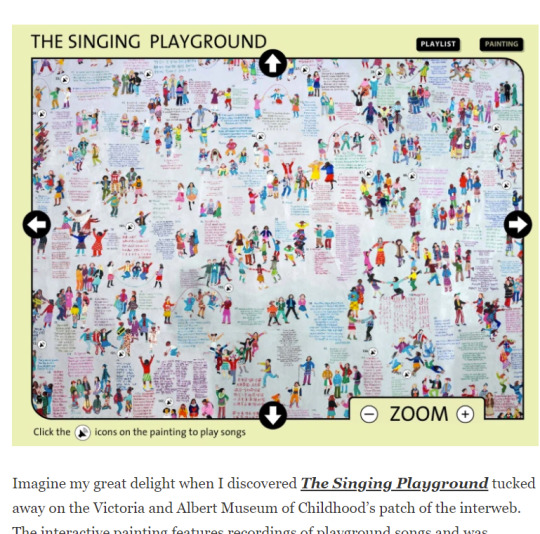
Chris Kelly - photographs of East London schools
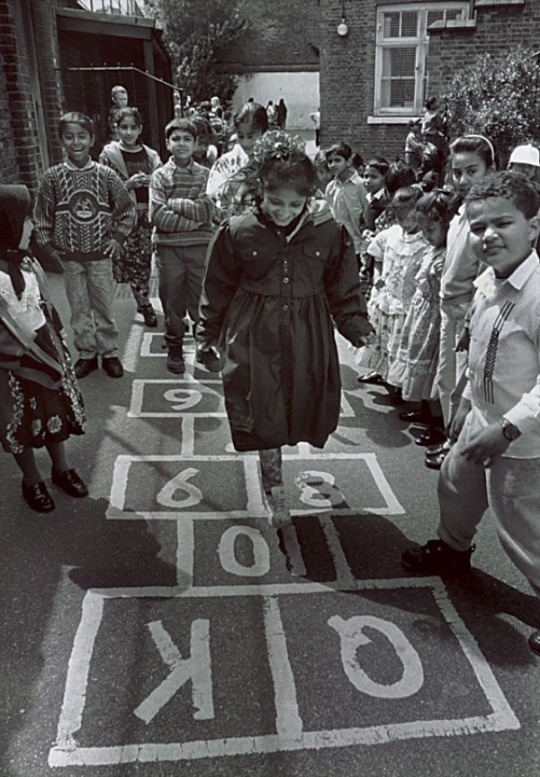
https://www.londonplay.org.uk/content/29934/our_work/recent_work/play_streets/the_history_of_play_streets
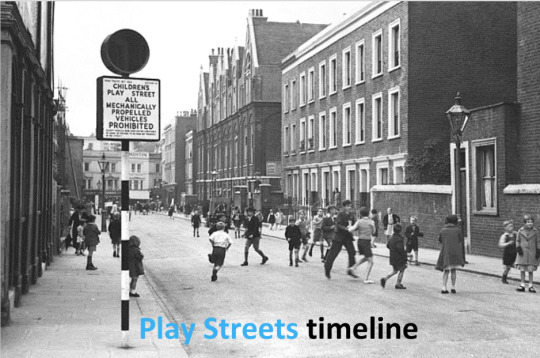

Sound and Film:
https://belfastfilmfestival.org/films/dusty-bluebells
https://www.bbc.co.uk/programmes/topics/Children%27s_street_culture (time to listen to children’s street culture)
https://movingimage.nls.uk/film/0799
https://www.youtube.com/watch?v=nBCJhNiKhFE

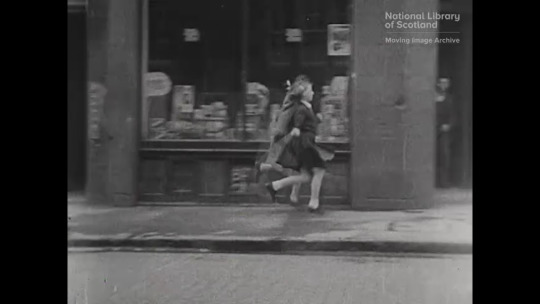


Where do the Children Play? Animated music video

In and Out the Dusty Bluebells - Children’s street games performed by the pupils of St Mary’s Primary School Belfast. (film still)
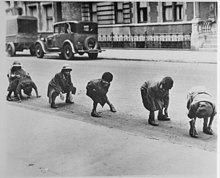

Whilst looking at alphabetisation for The Best Thing Since Sliced Bread I explored language, in particular the categorisation and organisation of language, as a means of encouraging division and exerting power. I looked at the Tower of Babel and how the creation of cities and “scattering of people across the earth” is in religious text attributed to the introduction of different languages, leading people to seek separate spaces to live due to a loss of understanding and empathy.
The language and lore of children’s games are a means of construction, imaginary and physical, and categorisation as a response to the world (street) around them. To create rules that others follow based on spaces around you and use spaces around you to implement them.
(Control of the child - children are forced off the streets for means of protection?, categorisation of childhood as a stage of life.)


Tower of Babel is a city in the sky (link to Robinhood Gardens streets in the sky) - aspirational building, overcoming social oppression.
https://jhna.org/articles/come-let-us-make-a-city-and-a-tower-pieter-bruegel-the-elder-tower-of-babel-creation-harmonious-community-antwerp/ (particular painting of Tower of Babel being created in tandem with the unification and urbanisation of a community in Antwerp)
Documentation of the street Mapping is of course fundamental to understanding the street but I think it would be interesting to look at and create maps of lesser documented aspects of the street (smaller movements.)
During my project on Rankin Inlet I “mapped” the route that number 1 would have to take to visit number 8, so few were the residents.
I mapped my mum explaining how she curated her display cabinet during my cabinets project through collage and language/ typography. Mapping children’s lore is a means of documenting their way of organising and categorising the world. I.e. mapping the movements of children playing games in films - how do they use the space of the street and how does it inform the structure of their games, the words they use?
Often in films you have a cut to children playing on a street - a familiar sight.
(in Das Leben Der Anderen the Lives of Others) we see the main character play with children on a street, a light and playful scene which contrasts the darker tones and nature of the other scenes- the street is where we encounter the lives of others.)


I have been documenting streets for quite a few years myself and have a large personal archive of street photography on my phone. What is discarded in these spaces vs what is deliberately placed in them? Patterns which can be identified and organised through photography.

Photography is a key source as the street is incredibly ephemeral and in constant flux. I think streets are largely documented through a very personal lense, a particular street walked by a particular person on a particular day or that is of significance to them. Or the streets which happened to be around at the time of the making of a film.
Street photographers - Roger Mayne in particular focused on children on the streets of London
https://www.theguardian.com/artanddesign/2014/jun/13/roger-mayne


http://www.massobs.org.uk/ The Mass Observation archive - initiative to observe and record everyday British life


Exhausting a street?
Street and childhood - both defined by personal experiences of them/ personal methods of documentation - therefore personal accounts are fundamental to look at.
“Childhood is an interesting zone, an interior space,” (street as a space, stage of life as a space) - other accounts of childhood experiences and games will exist in peoples personal biographies and memoirs
i.e the personal accounts of Andrew Cranston and Stevie Smith below
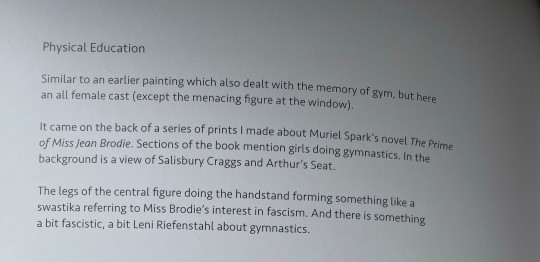




The street as a space to protest as well as communicate pride in the place/space you feel you belong to/ feel belongs to you (taking to the streets). The desire to create an environment is perhaps more present in children, whilst the desire to control and order an existing environment is more manifest in adults. Patriotism and nationalism. The post colonial era, British people wanting who they feel does not belong on their streets off their streets - this is solely based on visual assessment of individuals . Streets as a territorial space, our streets (tags.)
The street can be a space to be brutally honest about what isn’t working, your audience is unbounded.
https://www.huckmag.com/art-and-culture/art-2/meet-chicago-artist-running-protest-banner-library/
https://www.independentcinemaoffice.org.uk/films/britain-on-film-protest/
stills:

International comparison - During A levels I looked at whether or not Germany is actually as organised as everyone says it is. In particular the Ordnungsamt in Germany - essentially the Order Police and whether or not the stereotypes surrounding this nationality are present in the furniture, format and treatment of the street. The Ordnungsamt might call someone out for not having their door number at the right height. I think looking at a contrasting culture and making comparison is very important to fully understanding behaviour on the street and how it is informed by the visual language and structure of the street. I have also extensively documented the streets of Berlin through photography. Is order more inherent in the German street? How can we tell? Is it in how people behave in the street or how the street itself is structured or does one inform the other? German proverbs “Ordnung muss sein” There must be order.
https://www.goethe.de/ins/pl/de/kul/mag/22109580.html (is there really order in Germany?)
https://www.easygerman.org/podcast/episodes/3 (podcast on order in Germany)

Streets in the sky - social housing utopia - I briefly explored the RobinHood Gardens estate for IB Art in connection with the idea of glamorising childhood. What did the concept of streets in the sky refer to? It sounds so magical but also kind of dangerous and ultimately it fell apart. This is an estate I have also extensively documented through photography, particularly as it was about to be pulled down.



Stills from film Streets in the sky documenting the structure of Robinhood Gardens Estate https://filmfreeway.com/452396

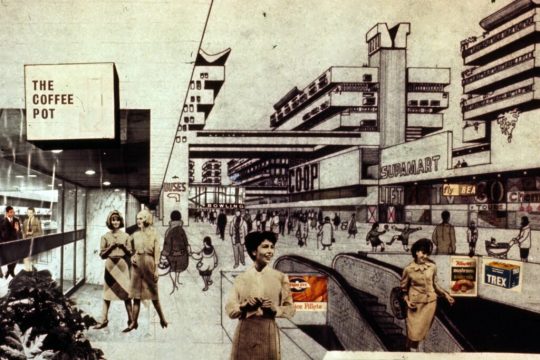
There are extensive articles/ essays discussing the failure of this architectural initiative with many making references to propaganda for this (failed) utopian future ^^^
https://www.architectural-review.com/archive/notopia-archive/notopia-the-fall-of-streets-in-the-sky
Walking_on_streets-in-the-sky_structures_for_democ.pdf
https://www.theguardian.com/artanddesign/gallery/2016/oct/22/lived-brutalism-portraits-from-robin-hood-gardens-housing-estate-in-pictures (looks at individuals who lived in the estates)


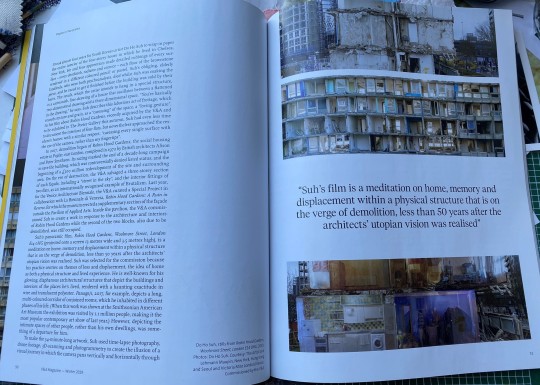

Conveying layers of past in space - links to Eastside Projects - layers of Birmingham https://eastsideprojects.org/about/users-manual/
The New York High Line is a Street in the sky. The redevelopment of obselete infrastructure as public space. (links to idea of Landscape Urbanism. The imaginary)


2 notes
·
View notes
Text
Silicon Valley’s imaginary Q2 2020 earnings call
[switch to long version]
CEO, MEGA TECH CORP - Hello everyone. These aren’t normal times. We’re not going to talk about our 10Q on this call. We’re here to talk about the next 10 years. So if you’re here for DAUs, ARR or CPC, you can drop off now.
We’ve been doing a lot of thinking about the race, health and economic crises our country faces. Over the last few weeks, I’ve asked our exec team to leave their homes, their [Zoom alternative] calls and their DoorDash deliveries to join protests and explore our community through new eyes.
What we now see - more clearly than ever - is that our entire company, industry, and Valley - are built on flawed foundations. A flawed social contract.

We can no longer just focus on the magical software bits and hope someone else figures out racial equity, employment, climate and health. This is Joel Spolsky’s Law of Leaky Abstractions on the ultimate scale. The abstractions are failing - and we’re seeing bugs and unintended consequences all around us. And the more we invest to deal with one-off bugs, the more likely we are to calcify change and imprison ourselves inside a failing stack.
It’s like we decided to build the world’s notification service on Ruby on Rails - or building an iPhone competitor on Windows CE. Fail Whale everywhere.
Unfortunately, America’s democratic institutions are in poor condition. They are struggling to deal with inequality let alone looming environmental disaster. A polarized electorate - particularly at the national level - leads to populism and makes it hard for these institutions to execute meaningful, long-term plans.
We talk a lot about speech, misinformation, fairness of targeted ads etc. But it’s becoming clear that UX, linear algebra/training data and monetization in our products is just the tip of the spear to address polarization. We believe polarization is a product of the underlying conditions of civil rights, education, health and climate debt that affect Americans differentially based on race, wealth, neighborhood and region.
So will today’s peaceful protests for racial justice expand into tomorrow’s revolution(s) for economic freedom? If you don’t think things are bad now, think about what happens when the stimulus checks run out. Take a look at the amount of debt in the public sector, use any imagination about COVID, work out what happens to their tax base / pension returns and consider the impact on public services, public servants and their votes. MMT better be a real thing. Maybe we didn’t start these fires, but that refrain won’t save us when the flames come our way.
We’re done debating why we need to act. It’s clear America needs our help. Let’s talk about how we’re going to rise to the occasion. Our mantra will be “internalize, innovate, institutionalize”.
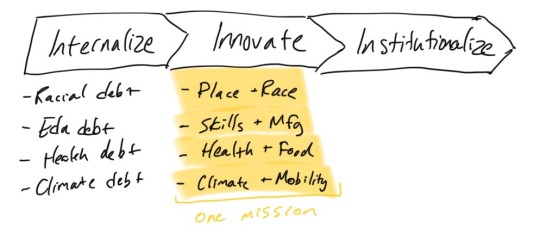
First, we’re going to internalize our problems. I’m here to tell you that issues of racial and economic justice are not just moral issues but they’re financial issues. Racial debt, education debt, health debt, climate debt will hit us harder and harder each year. (By the way, revolution probably won’t be great for your DCF models.) So we’re going to recognize these off-balance sheet liabilities - which amount to a few hundred billion in the US alone over the next 10 years for a company at our scale. You should assume other CEOs are thinking the same things - even if it takes them a few more quarters or years to say it.
Second, we’re going to innovate against these systemic problems - but our only shot at making progress is if we realign the entire company’s mission to address them. This is not about optics. This is not about philanthropy. This is not another bet. We have no choice but to put all our chips behind one bet - America - at least to start. It's the country that backed us in the first place, it's where most of our people are and most of our profits.
The job for our existing products, platforms and cash flows will be to advance four areas: place / race, skilling / manufacturing, health / food and climate / mobility - starting in America. The board will measure me based on job creation and diversity. It should go without saying that we’re pausing dividends and buybacks for the foreseeable future. Every dollar will serve our mission.
Every senior leader will need to sign up for our new mission - and those who choose to stay will receive a new, back-end loaded, 10 year vesting schedule. We want them focused on the long-term health of society - not the whims of Robinhood day traders or strengthening the moats of existing products.
We will need to invent entirely new ways to operate and ship products. As Joel Spolsky said, “when you need to hire a programmer to do mostly VB programming, it’s not good enough to hire a VB programmer, because they will get completely stuck in tar every time the VB abstraction leaks”. We need engineers, designers and product managers that will look deep into the stack, confront the racial, job access, health and climate debts that our products, our companies and our communities are built on top of.
This is not about CYA process to protect cash cows or throwing things over the fence to policy. We will need to innovate across technical, cultural and organizational lines. This requires deep understanding and curiosity. Systems and full-stack, not just pixels. This will bring more scrutiny to our company - not less. Change must not be the burden for only our Black employees or other subsets. Everyone must be on board - so for the next 12 months, we’re giving folks a one-time buyout if they want to leave.
Third, we can’t do any of this by ourselves. The problems are too big. Our role will be to provide enlightened risk capital (from our balance sheet or by re-vectoring operating spend) alongside R&D, product, platform leverage to help leaders and innovators pursue solutions in these areas. We will work with our peers and the public sector wherever possible - buying/R&D consortia, public-private partnerships, trusts, etc. Collaboration is the default, not the exception.
But the new era and landscape demands that we explore institutional models beyond global capital/startups, labor unions, NGOs or government. We need models that can more flexibly align people and purpose, that innovate on individualized vs. socialized risk/reward - and that ultimately help build and sustain local, social capital.
It’s difficult to say what these will look like - but increasingly figuring this out will be existential for our core business. Right now, it doesn’t matter if you’re designing the best cameras in Cupertino or the best ways to see their snaps in Santa Monica - we’re all just building layers of an attention stack for global capital. Our Beijing competitors have figured this out. ByteDance is already eating our lunch. They’re using the same tech inputs as us - UX, ML and large-scale systems - which are now a commodity - but with vastly lower consequences for the content they show - creating a superior operating / scaling model. They’re not internalizing social or political cost.
What we need in this era is the accumulation stack - where each interaction builds social capital. This is not about global likes. This is about local respect. We’ll create competitive advantage when we build products that reach across race / economic lines to harness America’s amazing melting pot and do so in ways that build livelihoods / property rights for creators and stakeholders.
With this operating model in place, we’re committing to fundamental change in four areas:
Place & Race - Over the next 10 years, 100% of our jobs will be in diverse communities that embrace inclusive schooling, policing, housing and transit policies. (Starting tomorrow, we’re putting red lines on our maps around towns with exclusionary zoning.) This is not about privatizing cities or an HQ2-style play to extract concessions. This is about investing our risk capital and our reputation to innovate alongside government. How do we bring world-class education to neighborhoods with concentrated poverty? What is the future of digital/hybrid charter schooling? Unbundled public safety? We’re done with de facto segregation.
We’ll embrace “remote-first” with physical centers of gravity as a means to this end. The Bay will become one physical node alongside several others (e.g. Atlanta, DC, LA) creating a strategic network to develop diverse talent across the country. We’re going to coordinate our investment with leading peers - since after all, this isn’t about cost or cherry-picking. It’s about broadening our country’s economic base.
Skilling & Manufacturing - We’re going to 10x the tech talent pool in 10 years - by inventing new apprenticeship models that bring women, minorities and the poor into the workforce. We’ll start with our existing contractor base, convert them to new employment models with expanded benefits and paths for upward mobility.
Next, we will invent new productivity tools for all types of workers - from the front office to mobile work to call center - that brings the power of AI and programming to everyone. These will be deeply tied into new platforms for work designed from the bottom-up to build social and financial capital for individual workers and teams.
Last, we’re setting a goal to manufacture most of our hardware products - from silicon all the way to systems - entirely in the US in 10 years. This will require massive investment, collaboration and innovation. It may require a revolution in robotics - but we will pursue this in a way that makes the American worker competitive - not a commodity to be automated away. If we’re successful, the dividends of our investment here will have massive spillover benefits to every other sector of manufacturing in the US - autos, etc. - including ones we have yet to dream up.
Health & Food - We’re not going to tolerate a two-class system for healthcare. As we convert our contract workforce to new employment models, we’ll innovate on the fundamental quality/cost paradigm. This may feel like a step down but it will put us (and the rest of society if we’re successful) on a fundamentally better long-term trajectory. Can we use AI to help scale the reach of community health workers? Can we help them create co-operatively owned care delivery orgs that offer new ways to share risk and support behavior change? Local, social capital is critical.
Food is part of Health, and we’re going to innovate there too. Free food for employees is not going to come back post-COVID. Instead, we’ll use our food infrastructure to bootstrap cooperatively-owned cloud kitchens. We’ll provide capital to former contractors - mostly Black and Hispanic - to invest and own these. We’ll build platforms to help them sell food to employees (partly subsidized), participate in new “food for health” programs and eventually disrupt the extractive labor practices we see across food, grocery and delivery.
Climate & Mobility - Lastly, we’ll be imposing a carbon tax on all aspects of our own operations - which we’ll use to “fund” innovation in this space - with a primary focus on job creation.
This is an area where we’re going to be looking far beyond our four walls from the beginning. As a first step, we’re teaming up with Elon and Gavin Newsom to buy PG&E out of bankruptcy and restructure it as a 21st century “decentralized” network of community utilities. It will accelerate the electrification of mobility - financing networked batteries for buses, cars and bikes along with charging infrastructure - and lead a massive job creation program focused on energy efficiency. It will use its rights of way to provide Gigabit ethernet + 5G to everyone - which will help people and help fund some of this.
Speaking of mobility, private buses aren’t coming back after COVID. Instead, we’re teaming up with all of our peers to create a Bay-wide network of electric buses (with bundled e-bikes) that will service folks of all walks of life - including our own employee base. Oh and one more thing - we’re bringing together the world’s most advanced privacy/identity architecture and computational video/audio to bake public health infrastructure directly into the buses. For COVID and beyond. None of this is a substitute for competent, democratically accountable regional authorities. This is us investing risk capital on behalf of society - with the goal of empowering these authorities.
Open technology for global progress - While we have to prioritize America given the scale of problems, the intent is not to abandon the rest of the world or hold back it’s progress. We feel the opposite - that over the coming decades each country’s technology sectors will thrive. To get there, we will continue to invest patiently - hiring, training, partnering, investing and innovating - but with a clear north star to help each country develop local leaders in new areas. Long-term, we’ll continue to contribute open technology that others can build upon.
America should be the proverbial city on a hill for everyone - not a metaverse for the rich with the poor dying in the streets. We don’t have much time so we’re getting to work now. See you next quarter.
2 notes
·
View notes
Text
The Consequences of Jean Paul and Food For Thought, an excerpt from Aurora's Feather: The Queer Decoding of The Sign of Four.
"Some things should not be hidden behind glass. They were made to be touched."
“How small we feel with our petty ambitions and strivings in the presence of the great elemental forces of nature! Are you well up in your Jean Paul?"
"Fairly so. I worked back to him through Carlyle."
"That was like following the brook to the parent lake. He makes one curious but profound remark. It is that the chief proof of man's real greatness lies in his perception of his own smallness. It argues, you see, a power of comparison and of appreciation which is in itself a proof of nobility. There is much food for thought in Richter.”
Now, this was odd. Jean Paul Richter never became friends with Von Goethe, who disliked some of his literary methods. Goethe even dubbed him 'A Chinese in Rome' due to his perceived overuse of Orientalism in his writings..."but in Weimar, as elsewhere, his remarkable conversational powers and his genial manners made him a favorite in general society.” Carlyle liked him.
Goethe spoke often of, especially in his play about striving and strife, itself, but so had other Romantics, so why use a quote from another author, already so close to the thoughts of the original muse it seems ACD has been using so far, especially if Goethe didn’t even like the guy?

You know something I have finally picked up on, is when having to look into historical figures, there is the official version...and then there is the rest that gets left out, which is a theme that seems to be peeking out from this story; that of an incomplete tale, searching for wholeness; the same theme that was used in BBC Sherlock.
Enter Warm Brothers: Queer Theory In The Age of Goethe by Robert Tobin, which contributed to most of the following information.
Jean Paul
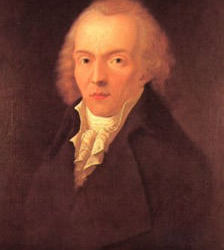
Johann Paul Friedrich Richter at one point changed his name from it’s more German sound to Jean Paul, which was French and what German society considered effeminate.
While most Romantic novelists wrote in the positive about Marriage, he usually wrote the experience as a negative; a deadly trap.
When he decide to marry, J.P. was quoted as saying “what he wanted was a woman to cook for him”.
18th century blurred the lines between homosexuality and heterosexuality. A person could have several ‘friends’ of different sexes, but could only love one person. Under the guise of friendship, people could say and write things that sound incredibly queer. Some men did not want their spouses to know about their letters, but others who were more pro-feminine, shared their lifestyle with their wives.
He coined the term “love of friends” used as a term among German homosexuals in the 20th century.
Jean was upset with the Christian faith, in part because he could not engage in health, fun horseplay with his male friends.
He once wrote to a friend, "Love must have something physical, a twig, down to which it flies. Send me a twig!”
(Seriously, these German dudes are killing me!)
Jean Paul is...or should be...considered an important voice in Love, Romance, and Homosexuality in German literature.
His novel Siebenkas is about Same Sex Desire, Orientalism, and a Love Triangle. From Transcendental Masturbators: Jean Paul's Siebenkas:
"Siebenkäs found Jean Paul leveling a more general critique at the Romantics and at Fichtean Idealism. This novel has been called “the first German marriage novel.” It appeared at a time in which the theory of marriage and the theory of self-consciousness were curiously intertwined. Jean Paul's critique of philosophical language threatened the self-understanding of German Idealism, construing it as a radicalization rather than a partial repudiation of the Enlightenment. Johann Wolfgang von Goethe's Wahlverwandtschaften showed that a married couple has sex while committing imaginary adultery. The erotics in the Wahlverwandtschafte imagined the four partners (real and imaginary) in four different sexual arrangements."

Orientalism
The Orient had a reputation of an ‘excess of intercourse’ and that it ‘exuded dangerous sex’. It is probably not a coincidence that increase in colonization to parts of the Orient run parallel to the popularity of it’s ‘Sexual Exoticism’ in widespread European literature. Germany reinforced cliches about Sex and the Orient, codified and promoted them in literature and philosophy.

The 19th century British explorer Richard Burton mapped out what he called the SOTADIC ZONE; an area outside of Europe that seemed more prevalent to Homosexuality and Pederasty. (For Burton, pederasty and homosexuality were "geographical and climatic, not racial," meaning it could be found in all the red bits.)
The countries included Morocco, Tahiti, Siam, the West Indies, Northwest America, India, Arabia, Algiers, Egypt, Turkey, China, Siberia, Italy, Constantinople and more within this zone.
Many Europeans, including Wilde, regarded North Africa as ‘a playground full of potential partners’. Italy was well known for its male prostitutes. Hans Christian Anderson was quite ‘distracted’ by them.
Goethe penned an Orientalist novel The East-Western Divan. It turns out that among Goethe’s many interests, it included Eastern Religion and Literature. In an amenable nod to Jean Paul, he stated that “A man who has 'penetrated' the breadth, height, and depth of the Orient, will find that no author had approached the Eastern poets and other authors more than Jean Paul.”
From Holmes quoting Jean Paul, if one were to assume that he wasn't merely referring to Paul's general philosophies, but his other 'foods for thought', then that would have to point to the German novelist being an advent for same sex male friendship AND desire, his use of Orientalism, in Paul's case, BOTH of very close male-male friendships, and Exotic male bodies. He wrote novels, poetry, and papers on the subject, particularly about the acceptance of close male friendships, be they homo-social, homosexual, or otherwise.
(Incidentally, the story within the story of Small, and his exotic adventures...where is it set, again?)
"In response to an ongoing public feud between a local Gay poet and a known homophobe, Goethe took up the cause of homosexuality when it was under massive attack. The attacks had begun in earnest in 1807, not only in response to Goethe’s championing of Winkelmann in his essay of 1805, but in a politically charged campaign against the supposedly treasonous Homosexual Johannes Muller...the attacks on Muller, one of the most celebrated historians of his day, were venomous, for the first time, bringing Nationalism to bear on the interpretation of Homosexuality (at the same time, incidentally, when anti-semitism took on a particularly modern virulence)”
“Man, esthetically is after all much more beautiful, superior, more complete than woman. Once it had arisen, such a feeling then can veer off easily into the animalistic, brutishly physical. Pedarastry is as old as Humanity, and we can therefore say that it is found In nature, even as it is AGAINST nature.”
At this point in the meta, I was almost finished, and had saved Jean Paul for one of the last pieces. I almost stopped here, but I kept having a thought: WHAT IF 'FOOD FOR THOUGHT' REFERRED TO SOMETHING ELSE? A POEM OR OTHER BOOK BY PAUL?
From Amazon: "Life of Jean Paul F. Richter Volume 2", by Eliza Buckminster Lee and William Howitt, is a replication of a book originally published before 1845. It has been restored by human beings, page by page, so that you may enjoy it in a form as close to the original as possible."
This book includes a quote, from a critic, on a piece of work:
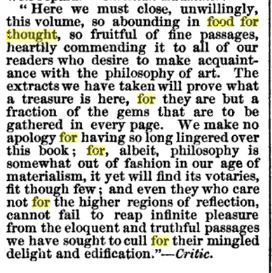
Only...the critic above was not speaking about Jean Paul, but Fredrich Schiller, and his highly praised piece of work,
The Philosophical and Aesthetic Letter and Essays of Schiller.

Johann Christoph Friedrich Schiller (1759–1805) is best known for his immense influence on German literature. In his relatively short life, he authored an extraordinary series of dramas, including The Robbers, Maria Stuart, and the trilogy Wallenstein. He was also a prodigious poet, composing perhaps most famously the “Ode to Joy” featured in the culmination of Beethoven’s Ninth Symphony and enshrined, some two centuries later, in the European Hymn.[1] In part through his celebrated friendship with Goethe, he edited epoch-defining literary journals and exerted lasting influence on German stage production. He is sometimes referred to as the German Shakespeare; his are still among the most widely produced German plays both in Germany and internationally.
In addition to his literary accomplishments, Schiller was a formidable philosophical thinker. Between 1791 and 1796, he authored a range of theoretical works that are both sophisticated and original. These writings primarily concern aesthetics, but they stake out notable positions on ethics, metaphysics, ontology, and political theory as well. Together, his essays helped shape one of the most prolific periods of German philosophizing; since then, they have served as a significant source of philosophical insight from an aesthetic practitioner of the highest standing.
"As we shall see, Schiller’s solution to Kant’s belief that morality can only be achieved by negating man’s negative sensuous impulses, is to educate the emotions of man, in order to bring them into harmony with reason. For Schiller, a human being who has achieved such harmony, by transforming his selfish, infantile erotic emotions into agape of truth, justice, and beauty, is a “beautiful soul.” Moreover, since only such a person is truly free, durable political freedom can only be achieved by deliberately fostering such an aesthetical education of man’s emotions among the population. Because Schiller’s writings are such a devastating critique of the philosophical basis for continuing oligarchical oppression of humanity, academic agents of the oligarchy, taking advantage of the abstraction of Schiller’s argument, have gone so far as to attempt to deny his opposition to Kant, even to the point of lyingly portraying him as a Kantian".
Thomas Mann did a life-long study of Schiller in Queer terms for decades, and asserted in his last work Essay on Schiller, that the philosopher had an intense love for Goethe:
"The great adventure of his life, his experience of passion, of passionate attraction and repulsion, of deep friendship, deep desire and admiration; of give and take, of jealousy, of melancholy, envy and proud self-assertion, of lasting, affective tension...was an event between man and a man. It was his relationship with Goethe." Mann asserts that Schiller was the completely 'masculine' writer, that wanted to attribute to Goethe a 'feminine manner'.
The intense male friendships in many of Schiller's works have resulted in the inclusion of his works in various compilations of 'Gay Literature', including Bullough's Bibliography of Homosexuality. His piece Wallenstein is a known source for Gay Male History. During Schiller's time and beyond, his work was considered so Queered, that it seems 'The Appropriation of Schiller' actually became a thing. You will find his influence in plays, essays, adaptations, cinema.
So prominent was the talk about Schiller's perceived Homosexuality in Queer circles, that a Satirical magazine, Jugend, featured in one issue a drawing of two boys, resting, and overlooking a bridge and a tower, complete with a quote from Schiller. Sascha Schneider, untitled, 1897, Queer Schiller?

From Warm Brothers: "Let us leave the realm of psychoanalysis and return to Schiller . As Jane Bennett points out, confining Schiller to the purely abstract, to concepts like humanity and liberty vitiates his most heartfelt beliefs. Schiller was quite capable of writing abstract theses but chose instead, to write dramatic plays. In the abstract thesis, he went to bat for Aesthetics...for that realm of experience that attempted to bridge the gap between the mind and body; that attempted to connect sensual pleasure with thought. Schiller's hope, in the Letters of Aesthetic Education on Humanity, was that people could will to do what they ought to do. 'The 'willing' is often a sensual, physical, bodily act. The drama attempts as to flesh out the moral problems that Schiller confronts by giving these problems to people with actual bodies. By ignoring the sensual, physical, bodily in Schiller's dramas, readers have tended to turn him into an intellectual, concept artist, which is at odds with his philosophy of art. Schiller had begun his career with writings on the mind/body problem, inspired by the medical models that denied the separation."
Faust is academically seen as a treatise on Schiller's Letters. And the skull that Faust has is based on the actual skull of Schiller's that Johann kept for a short time.
If HoImes sees himself in this story, as Goethe and Watson as Schiller, he may have just hinted to Watson that he is a man of faults, but that he yearns to have a more human existence; a friendship that goes beyond the platonic, and to be made whole, through a sensual, physical act.

After all of this, everything just seemed to go quiet. I stopped working for a while, and started to cry.
@sarahthecoat @possiblyimbiassed @holmezyan @theconsultinglinguist @iamsherlockedbyholmes @impossibleleaf @raggedyblue @elldotsee @gosherlocked @elwinglyre @consulting-nerd-of-many-things @bluebluenova @devoursjohnlock @may-shepard
#i think this is what might be called a love confession#aurora's feather#happy 29 anniversay#johnlock#johann von goethe#faust#schiller
27 notes
·
View notes
Text
City of Refugees, Aedes Exhibition
City of Refugees, Berlin Built Environment Exhibition, Aedes Architecture Forum News
City of Refugees, Aedes Exhibition
6 Oct 2020
City of Refugees, Aedes Exhibition
University of Houston Gerald D. Hines College of Architecture and Design: City of Refugees, Aedes Exhibition
Exhibition: 31 October 2020 – 7 January 2021
Venue: Aedes Architecture Forum, Christinenstr. 18-19, 10119 Berlin
Opening hours: Tue-Fri 11am-6.30pm, Sun-Mon 1-5pm and Sat, 31 October 2020, 1-5pm
Of the 7.8 billion people on the planet, more than 70 million are now refugees and asylum seekers. With few countries willing to receive these displaced people, many refugees are restrained in tents, or makeshift cities. These temporary solutions often become permanent, which come with significant challenges. City of Refugees – a three-year research by the University of Houston College of Architecture and Design under the direction of the studio professors, Peter J. Zweig and Gail P. Borden – offers a provocative approach to the discussion of new solutions: Four imaginary cities on four continents were designed as prototypes for the accommodation of migrants providing facilities to meet their immediate needs and long-term opportunities for their self-empowerment. The exhibition at Aedes not only gives insights into the diverse aspects of these utopias, but also chronicles the plight and journeys of refugees in contemporary society.
The current global geopolitical landscape is indelibly marked by rising national and international conflicts creating multiple regions and countries beset by massive migrations. Likewise, the consequences of climate change and man-made environmental damage are forcing people to leave their homes. Many refugees are caught between borders because fewer countries are accepting the growing numbers. This often leads to them being trapped in refugee camps: Although these expanding settlements were intended as temporary tent communities, in reality they have become increasingly permanent.
Worth mentioning is the Kutupalong refugee camp in Bangladesh, which has existed since 1991. It has grown to become the largest of its kind in the world, with more than 600,000 people living in an area of just 13 square kilometres, stretching infrastructure and services to their limits. A more recent example of a permanent settlement is the Zaatari camp in Jordan where people have found refuge from the civil war in Syria since 2012. With an estimated 80,000 inhabitants, a main street with market stalls and shops, kindergartens and schools, solar power and a drinking water system, Zataari has become the fourth largest “city” in Jordan. However, the often forgotten, “temporary” communities are most often evolving into haphazard, ill-equipped, permanent locations that are in need of and reliant upon humanitarian support.
City of Refugees
A three-year intensive sequence of design studios at the University of Houston, Gerald D. Hines College of Architecture and Design, under the direction of Peter Jay Zweig, FAIA and Gail Peter Borden, FAIA has developed a provocative approach to proposing four prototypical Cities of Refugees of varying sizes on four continents, ranging from 50,000 to 500,000 people:
• BRIDGE CITY in South America
• gRADIANT CITY in Africa
• SWITCHBACK CITY in Southeast Europe
• UPCYCLE CITY in South Asia
Each city is conceived as being universal in its architectural principles, yet by contrast, relies heavily upon local traditions whereby the residents of the City of Refugees are able to build their own homes: Thus combining universal and vernacular ideas can redefine the very origins of the contemporary city.
The Process: Developing a Utopia
Before developing the urban design of these fictional places, the students analysed the annual U.S. military defence spending, which amounts to 700 billion USD. Professor Peter Zweig states: “By reallocating a minor portion of defence spending – less than ‘one-quarter’ of one percent of the military budget – a City of Refugees can be funded. For example, we propose that the construction of one submarine be delayed for one year to build out one entire city.”
It is within the framework of a reinterpretation of Thomas More’s 1516 book, Utopia, that the City of Refugees represents a place transcending the fate of those who have been displaced from their homeland. It is a concept for a city in a new context that welcomes migrants looking for a place to be free and act independently. As a U.N. sponsored, free economic zone, the four proposed cities would create a platform for a new multi-ethnic society based upon justice, tolerance and an economically viable, net zero environment.
These cities redefine the concepts of streets by eliminating the need for cars, rethinking sustainable technologies and engaging an architecture that is both vernacular and universal. Multiple areas around the world were proposed as possible sites for investigation in addition to the four prototype locations that were designed, such as: on the border of the United States of America and Mexico between the cities of El Paso, Texas and Ciudad Juarez on the Isla de Cordoba. This site, called “No Man’s Land” represented a place that could accommodate the rise in population of displaced people along the southern border of the United States and Mexico.
To quote Peter Jay Zweig: “The blending of local and social customs with the imported influx of refugees creates an environment that is committed to the idea of a ‘pledge’ given upon arrival to the city, for social acceptance through community volunteer programs, self-empowerment, education, shared communal kitchens and work spaces. Appropriate infrastructure eliminates the need for cars as the primary means of transportation: All points of the city are accessible within ten minutes. Alternative energy, water collection and locally available food become the primary source of sustenance and power for the city, while waste is innovatively recycled and self-contained toilets eliminate the need for sewage systems. The City of Refugees is a proposition to solve a problem that exists not only for refugees, but as a possible solution to climate change, the waste of natural resources and a commitment to rethink the origins of urbanism, while responding to the current global challenges.”
Exhibition
In the exhibition and book, City of Refugees: A Real Utopia (AR+D publishers 2020 by Zweig + Borden) the contemporary global migration flows of those displaced is documented using a variety of maps and data and opens up a view on the profusely illustrated, innovative concepts of four prototype cities. The immersive exhibition at Aedes encompasses two simultaneous formats: one of physical models and drawings and the other in an augmented reality that coexists with the physical exhibition.
Directors
Peter Jay Zweig is a Professor and Curator of International Exhibitions at the Gerald. D Hines College of Architecture and Design at the University of Houston. He is principal of the award-winning Peter Jay Zweig Architects and an author of publications such as: Alternative Architecture, Risky Habit[at], Houston Genetic City, City of Refugees: A Real Utopia. As an exhibition designer, he has curated 15 major U.S. and international exhibitions. He has also received 80 worldwide patents for innovative building systems and materials for affordable housing built on six continents.
Gail Peter Borden is a Professor and Director of Graduate Programs at the Gerald D. Hines College of Architecture and Design at the University of Houston. As principal of Borden Partnership, his design work has won numerous recognitions. His books include: Material Precedent; Matter; Principia; Process; Lineament and New Essentialism. As an architect, designer, artist, theoretician and practitioner, his work focuses on the role of materiality and architecture in contemporary culture.
The exhibition is part of the ANCB programme Borders and Territories: Identity in Place, which examines new spatial, geopolitical and cultural possibilities related to nations and people on our globe. Together with City of Refugees, the exhibition Purgatory by Ai Weiwei will be shown at Aedes Architecture Forum during the same period. Both exhibitions conclude the 40-years Aedes programme of 2020.
Further information: Aedes
We would like to thank the Aedes cooperation partners
Zumtobel, Cemex, Camerich, Carpet Concept
Made possible with the generous support of
Gerald D. Hines + Barbara Hines, Dean Patricia Belton Oliver
Description of the Four Utopian Cities
BRIDGE CITY
South America | 50,000 people
Local Conditions:
The city is located on the Rio Santiago in Ecuador near the Peruvian border just south of the equator. The location runs along a major Ecuadorian highway and is located within two miles of an airstrip. The location is ideal for a self-sustaining city. The resources are abundant for inhabitants to create and sustain a net zero city. The Sol LeWitt inspired structure acts as a bridge for the inhabitants across the Rio Santiago river, while creating local opportunities in industries such as: aqua-culture and a wharf for water markets. The Rio Santiago region is ideal for producing honey, fruit, vegetables and flower cultivation. Traditionally the local culture produces palm weaving and clay pottery, which can now be used in the construction of the homes for the city.
Architecture of the City:
The architectural infrastructure is composed of a 30 x 30 x 30 foot grid, which bridges a populated river that is used for fishing, trade and commercial movement. The structural field has been eroded through light and wind apertures that allow for concentrated volumes to emerge within the regular geometry. Activated top and bottom through climatic and programmatic responses, the structure arches over the river and creates a performative rooftop landscape for solar and food production in park-like spaces. The infrastructure is free to take advantage of its location on the equator through hydroponics, recycled waste, water capture systems, and passive and solar energy production.
gRADIANT CITY
Africa | 100,000 people
Local Conditions:
The city is located on east side of the Democratic Republic of the Congo (DRC), on the edge of Lake Edward and on the border between DRC and Uganda. The unique site is composed of a very pronounced slope that allows the city design to be based upon the temperature differential of the mountain. As a hillside waterfront city, the urban form of the gRadiant City takes advantage of both the hill and the water through two linear structures. One structure that ascends the topography perpendicular to the adjacent body of water and another that parallels the waters’ edge. The slope generates a significant temperature gradient as one ascends in elevation.
Architecture of the City:
The city is organised as a linear figure that ascends the topography perpendicular to the adjacent body of water. The ascending urban structure allows for temperature differentiations to determine the optimal position for crops. The line also exists as a gradient from the water’s edge with dissipating density from urban to suburban and, ultimately, rural as the city transforms from a water-based economy to a land economy. By combining a utopian typology with the local traditions of the vernacular, a unique architecture is produced. As a horizontal skyscraper that hovers over the landscape, the embedded and levitating programmes create shade and a unifying layer underneath the structural, performative roof.
SWITCHBACK CITY
Southeast Europe | 250,000 people
Local Conditions:
The city is located on the border between Serbia and Romania along the Danube River near the city of Tekija, Serbia. The location runs along a Serbian highway and is built inside of the cove along the river. The location is ideal for a self-sustaining city. The resources are abundant for creating and sustaining a net zero city, as well as an economy that can develop from the local lumberyards. The structure of the city allows for a symbiotic relationship between the inhabitants of the Serbian region, while also creating opportunities in industries such as: aquaculture and lumber for the fabrication of building material products and supplies. The area is ideal for terraced farming, homesteading and fishing.
Architecture of the City:
Located in a cove on the river, the city is composed of embedded terraced landscapes that are linked through an ascending field of switchback streets. This unique urban pattern with six-storey buildings (in an organised three units up and three down) allows for a horizontally accessible vertical city. Using the wooded hillside as both an economy derived from the existing timber resources and as the material for the construction of the city proper, the wedge development along the cove allows for a sequentially phased evolution to the city. The position on the river allows for the wood products sustainably harvested to also invigorate the trade with nearby cities. Gondolas provide transportation without cars and make the city accessible within ten minutes in any direction.
UPCYCLE CITY
South Asia | 500,000 people
Local Conditions:
The city is located on the Coast of Bengal in Bangladesh near the border to Myanmar. The coast of Bengal is a ship graveyard where many unusable ships are stranded. Upcycle City will dismantle the unusable ships and re-innovate shipping containers into warm living units for refugees. Furthermore, the city will take advantage of the existing dam as a part of the infrastructure system. The city is divided into three zones: Sea, Land + Sea, and Land. The sea area consists of unused oil rigs intended as future agricultural centres. The shore will become an industrial zone used to dismantle and repurpose the big ships. The land area will be where most of the population will be living. The refugees will maintain their own free market, strengthened by the various skills of the individual inhabitants.
Architecture of the City:
Founded upon the discarded technologies of the oil rig, freighter and the shipping container industry, Upcycle City develops both its economy and its tectonic morphology from these abandoned resources. Occupying the fluctuating waters’ edge between the flooded tidal plains, a railroad, an important highway and an existing dam, Upcycle City is divided into three zones: One is located on the water (oil rigs), the second on the beached edge (ship-breaking) and the third is fully on land (stacked and arrayed shipping containers), which are all arranged to create a collection of neighbourhoods and districts that organise the city. The city contains: circle crops, gondola’s crisscrossing main street in order to make the city accessible, containers enlisted for structural foundations, innovative infrastructural systems that approach net zero and a scaffolding circulation system all contribute to the unique architecture of Upcycle City.
Photography © Zweig + Borden
City of Refugees, Aedes Exhibition images / information received 061020
Location: Christinenstr.18-19, 10119 Berlin, Germany
Aedes Architecture Forum Exhibitions
edes Architecture Forum News in 2020
4 Jun 2020
Water Garden at Aedes Architecture Forum
Curated by Junya Ishigami & Associates
photo © Courtesy of nikissimo Inc.
Aedes Architecture Forum Exhibitions
Archi-Tectonics – Winka Dubbeldam & Justin Korhammer, New York
Flat Lands & Massive Things – From NL to NYC & Beyond
picture © Archi-Tectonics
Archi-Tectonics Architecture Event
Active Buildings – Innovation for Architecture in Motion
Aedes Architecture Forum Exhibition by falkeis²architects
photo : Filmfabrik
Active energy building in Vaduz, Liechtenstein
Woodland Sweden – Contemporary Timber Construction
Härbret Summer House in Nannberga by General Architecture/Stockholm:
picture © Åke E:son Lindman
Urban Intermedia: City, Archive, Narrative
Harvard Mellon Urban Initiative and Graduate School of Design, Harvard University
picture © Harvard Mellon Urban Initiative
The Groundscape Experience
Dominique Perrault, Paris with SubLab, EPFL, Lausanne & ADSlab, EWHA Womans University, Seoul
picture © Dominique Perrault Architecte
Dominique Perrault
Nieto Sobejano Arquitectos: TABULA – The Arvo Pärt Centre in Estonia
image © Nieto Sobejano Arquitectos
Nieto Sobejano Arquitectos
Marina One Singapore – Architecture Exhibition in Berlin
image courtesy of architects
Aedes Architecture Forum Exhibition in Berlin
Berlin Buildings
German Buildings
Comments / photos for the City of Refugees, Aedes Exhibition page welcome
Website: Architecture
The post City of Refugees, Aedes Exhibition appeared first on e-architect.
0 notes
Text
Building Terrix: Day 2
Worldbuilding June, Day 2: Geography
Disclaimer: As DM, I tend to steal ideas from here and there for my personal game. Most of this is cherry-picked, combed over, changed, warped, and molded to fit Terrix. If you see an idea in here you recognize as not mine, that’s probably because it’s not. This isn’t for a book, or anything I’m making a profit from–only for a fun game and a world I can provide for my wonderful players. :)
In which geographical areas will the story take place? How much ground will the story cover? What are the most striking features of landscape, climate, animals, etc. in this area? How will these features affect travel time, communication, etc.?
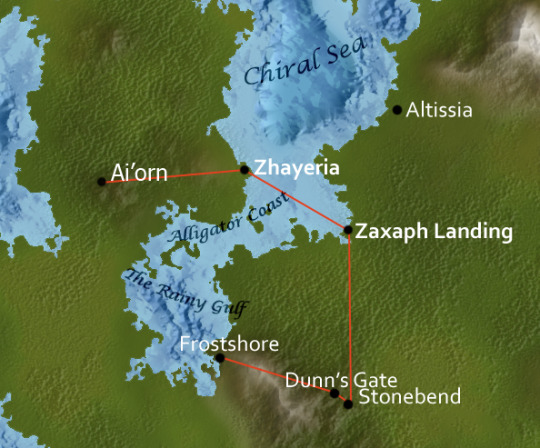
Area the party has covered in our adventure as of today.
The adventure is split up into smaller campaigns, each of which have included travel from one place to another over the course of the adventure. They will travel further still, exploring new areas, and a prequel of sorts will take place on a faraway plot of land in the icy north.
If there are non-human inhabitants, are there any areas they particularly claim as their own (e.g., dwarves traditionally live underground, usually in mountains)?
This was covered in the Introduction post!
How do differences from Earth (multiple suns, moons, etc.) affect the climate in various areas?
Terrix’s rotational wobble is less pronounced than Earth’s—it’s more firmly tilted on its axis, causing less pronounced seasons and a more overall steady temperature in fixed areas on the planet. (Shout-out to @strudeloo for that info!) The slightly smaller size of the planet also causes the days to be slightly shorter, and the gravity is a bit weaker than on Earth. Exxus burns hotter than Sol, but the planet is further away—so the temperatures are relatively alike in sustaining life, but the years are 400 days long.
There are three moons circling the planet as well, causing differences in tides. For the most part, the effect on the tides is weakened because of smaller moons, but the tides are more varied and unpredictable. Sometimes the tide pull is very strong, when the moons happen to align a certain way.
How much land is in each of the equatorial, temperate, and polar zones? Note: climate affects landscape through erosion and weathering; the distribution of plants and animals, and formation of soil. As a result, it determines what crops can and can’t be grown, what animals can and can’t live in an area, what clothes must be worn to cope with the weather, and how houses are built. Winter freezing and thawing may change travel patterns, as waterways freeze or flood and passes close.

Terrix’s climate zones. White/gray is polar, deep green is the temperate area zone, while the center bright green is the equatorial zone.
Weather also affects available sports, like skiing. Are all these things consistent with what you say the climate is like in particular areas?
At the beginning of the campaign, they went to Frostshore, which wasn’t all that frosty. Though this was a mistake on my part, we also said that perhaps it USED to be a cold area a very long time ago, or someone with a sense of humor named the town.
Where are major mountain ranges? Rivers and lakes? Deserts? Forests, tropical and otherwise? Grasslands and plains?
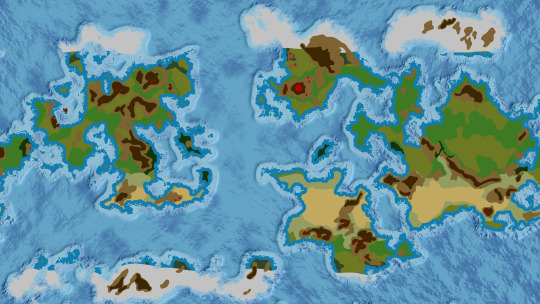
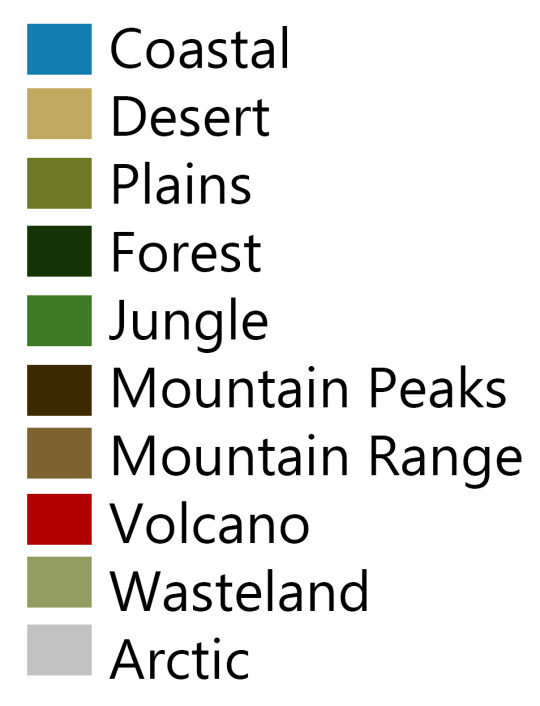

Map of all my rivers and lakes! Notable bodies of water my players have come across: Kinesp River, and its waterfall starting from the huge lake on the right continent, the Alligator Coast by Zhayeria (big port city by the bay).
These are all the main rivers and lakes. There are, of course, much smaller bodies of water upon zooming in. Zhayeria is based by the ocean and is cradled in between two branches of a relatively small river that serves as a drinking water source.
If there are imaginary animals (dragons, unicorns, etc.), how do they fit into the ecology? What do they eat? How much habitat do they require? Can they live anywhere, or do they prefer or need specific kinds of climate or terrain? Are they intelligent and/or capable of working spells, talking, etc.?
The most legendary and prominent magical animal is the dragon. Dragons comes in all shapes and sizes and types. Each type of dragon could honestly be treated as an entirely different animal, though they all share a love of treasure and powerful breath weapons, as well as an intelligence at the level and above humans. They have innate magic, though they can learn more magic just like any humanoid can. Dragons are also unique in that some like to blend in with humanoid societies and shapeshift, living among them and making friends. They live quite a long time, though, so at some point a lot of dragons become hermits. Their habitats range from the sea, to volcanoes, to the desert, to swamps, and their effects on the environment are profound. They all have different prey (fish and whales, humans, other dragons) and can greatly impact the ecosystem, whether in a positive or negative way. They are rare, especially in the current time in Terrix.
Other magical animals are, indeed, unicorns, as well as others. Unicorns act as forest guardians and try to bring more life into them than death, which annoys most druids as believers in a balance of life and death in nature. It is said that unicorns are born when an exceptionally good person dies, their soul forming the celestial being that is the unicorn. Unicorns are herbivores, but, strangely, they also survive by “eating” the moonlight reflected off the water’s surface.
There are sentient plants that trap their prey, griffins that swoop from mountains like great terrifying birds, huge hibernating beasts like the tarrasque that come and bring balance by causing destruction when needed, magical beasts of the Underdark that could kill with a glance, fae that lure their prey in with tricks and allure, and many other beasts and beings.
Since this is a world in Dungeons and Dragons, a complete listing of the general area you can find monsters/creatures in is organized in the Monster Manual (5e)!
Which areas are the most fertile farmland? Where are mineral resources located?
Mineral resources are found in the earlier map! The most fertile farmlands usually lie between river branches and on the plains. Other lands can be made into farmland, but the most naturally fertile farmlands are found in the northern half of the Usratia mainland. There are also some really great fertile farmlands on Aezith’s southernmost areas, where the Hin became famous for their green thumbs.
Which animals, birds, fish, and other wildlife are commonly found in which areas? If there are imaginary animals such as dragons, where do they live?
Imaginary animals were briefly discussed, and can be more thoroughly looked at thanks to resources from Wizards of the Coast. As for common wildlife, animals are found in the same types of areas as their equivalents on Earth: whales and other cetaceans live in the oceans, following the currents as they migrate, wolves and deer live in the temperate to colder forested areas, jaguars live in jungles, etc.
Which natural resources, if any, have been depleted in which areas over time?
There are some areas that have been deforested, and magic deep in the earth was tapped into and nearly wiped out the world population at one point. Needless to say, the natural world magic energy source was not looked for again, and it was forgotten over hundreds of thousands of years with no trace of evidence of it existing.
Diamonds are important in the world, being gems that are used in cleric spells. Clerics can revive people from the dead, and the longer the person goes being dead, the more diamonds it requires as the exchange for magical energy needed to reform the body and soul of the one who died. Planar energies tie tightly into necromancy and revival magic, and diamonds seem to be the only thing that triggers the calling of the soul back to the body.
Therefore, diamonds are a very valuable commodity, and many mines have been depleted.
Which resources (e.g., coal, oil, iron ore, gold, diamonds, limestone, etc.) are particularly abundant, and in which areas? Which are scarce? Are there places where there are rich deposits that haven’t been discovered yet, or where they haven’t been fully exploited?

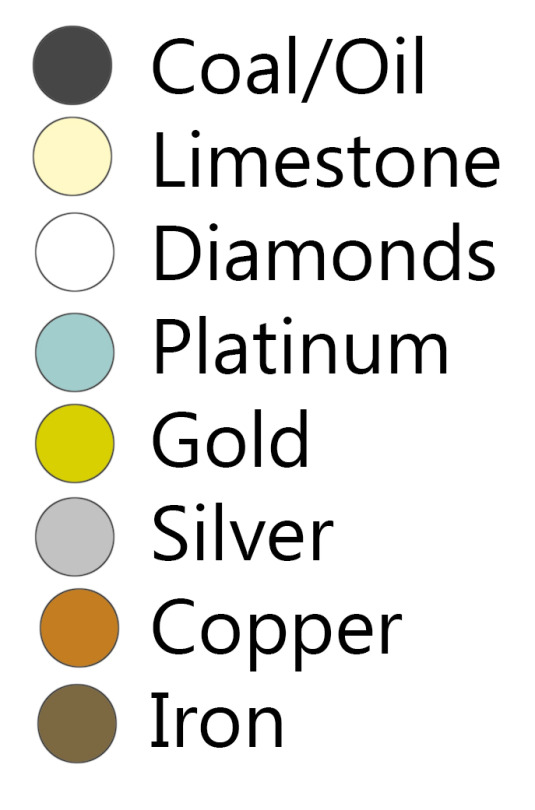
How much conflict has been or might be caused by these imbalances in resources? How much active, peaceful trade?
Gold quickly became a shiny, coveted metal, and became the main source of currency. Eventually, platinum, gold, silver, and copper became the common world currency. This is mostly thanks to magical teleportation and travel forcing a common currency and language through trade.
Diamonds, again, are an important commodity, and right to the lands near diamond-rich areas are often fought over.
Dwarves became the main miners of metals and the most prominent metalworkers. After showing their skill in both of these things, people began peaceful trade with them after a long history of their craft and honest merchants.
Magic and power from extraplanar beings is a commodity often not thought of, but it is coveted. Wars have been started because a sect of people sought power and magic, but became corrupt or brought danger into the lands. One such example is the war between dragonborn and tieflings of old, in Arkhosia and Bael Turath on the continent of Orcran.
What water resources available, and for what uses (a mill wheel requires flowing water, i.e., river or stream; irrigation needs a large, dependable water source like a lake or large river; etc.)?
This depends on the city or town. Zhayeria has a few mill wheels at the rivers that surround it. Dunn’s Gate (the inner city) has an intricate inner irrigation system. Places like Aerilon marry magic and technology to get enough water to them and make running water systems.
Terrix is full of rivers and lakes among other bodies of water. Some places near the ocean even have the means to turn the salt water into potable water.
4 notes
·
View notes
Photo

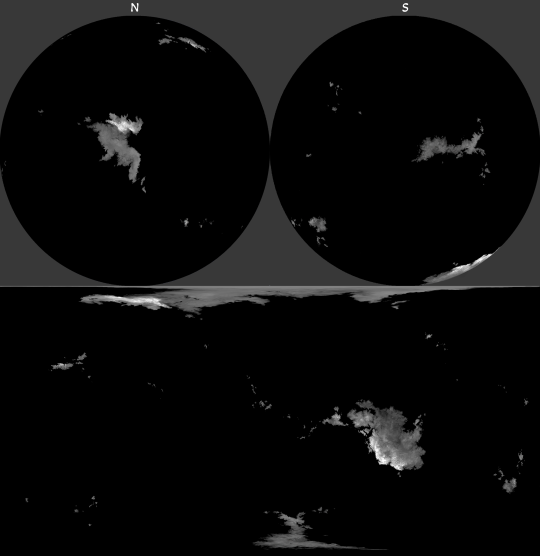








Just getting around to posting these now that it's been weeks since I sent them in, but here's my second series of maps for @jayrockin‘s Runaway to the Stars project! This is the home planet of their Avian species of aliens, and being predominantly ocean-covered and having an obliquity of only 11 degrees, these factors result in a somewhat more stable, less seasonally variable climate than we see on Earth. Every image here is helpfully (hopefully) captioned, but for a quick summary, these maps represent the elevation data (with and without a color gradient and water systems); the seasonal ice extent (limited to the Equinoxes and an Annual Average since the Winter and Summer sea-ice extents aren’t that different and there’s very little land ice outside the poles); and maps showing the Average Annual Temperature, Total Annual Precipitation, a combination of the two along with a key, and, finally, a map broken down into distinct zones based on temperature and precipitation, ice cover, mountains, seasonality, and Continentality vs Oceanity, based loosely on the Trewartha climate classification system.
Digital Painting (Photopea)
2022
Higher resolution copies of these maps can be found in my Reddit post about this : )
#Mapmaking#Imaginary Maps#imaginary planetology#imaginary geography#worldbuilding#alien planet#Runaway to the Stars#diagrams#major project#commissioned works#fictional planets#seasonal ice extent#climate zones#climate map#temperature map#precipitation map#digital painting#Photopea#Christopher Maida Artwork
27 notes
·
View notes